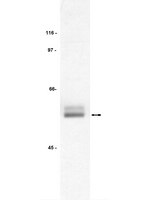06-583-25UG Sigma-AldrichAnti-Lck
Anti-Lck Antibody is an antibody against Lck for use in IP & WB.
More>> Anti-Lck Antibody is an antibody against Lck for use in IP & WB. Less<<Recommended Products
Overview
| Replacement Information |
|---|
Key Specifications Table
| Species Reactivity | Key Applications | Host | Format | Antibody Type |
|---|---|---|---|---|
| B, H, M | IP, WB | Rb | Purified | Polyclonal Antibody |
| Description | |
|---|---|
| Catalogue Number | 06-583-25UG |
| Brand Family | Upstate |
| Trade Name |
|
| Description | Anti-Lck |
| References |
|---|
| Product Information | |
|---|---|
| Format | Purified |
| Presentation | 0.1M Tris-glycine, pH 7.4, 0.15M NaCl with 0.05% sodium azide |
| Quality Level | MQ100 |
| Applications | |
|---|---|
| Application | Anti-Lck Antibody is an antibody against Lck for use in IP & WB. |
| Key Applications |
|
| Physicochemical Information |
|---|
| Dimensions |
|---|
| Materials Information |
|---|
| Toxicological Information |
|---|
| Safety Information according to GHS |
|---|
| Safety Information |
|---|
| Storage and Shipping Information | |
|---|---|
| Storage Conditions | 2 years at -20°C |
| Packaging Information | |
|---|---|
| Material Size | 25 μg |
| Transport Information |
|---|
| Supplemental Information |
|---|
| Specifications |
|---|
| Global Trade Item Number | |
|---|---|
| Catalog Number | GTIN |
| 06-583-25UG | 04054839342455 |








